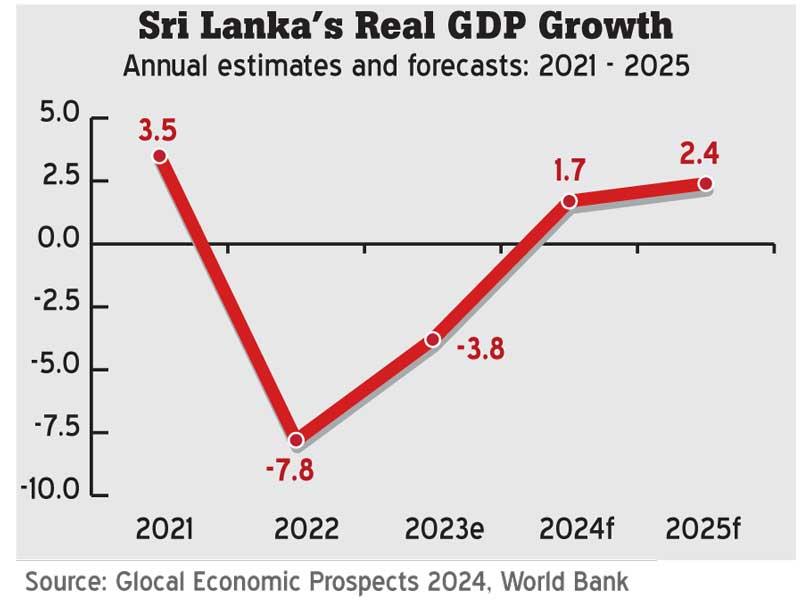11 Jan 2024 - {{hitsCtrl.values.hits}}

Sri Lanka’s economy is expected to move towards a positive growth trajectory this year, as gross domestic product is estimated to grow by 1.7 percent, the World Bank (WB) said in its recent Global Economic Prospects report.
The island nation, which saw its economic growth contract by 7.8 percent in 2022 and 3.8 percent in 2023, is expected to witness its economy expand by 2.4 percent in 2024.
“In Sri Lanka, the economic outlook remains uncertain, amid debt restructuring negotiations with private creditors and the implementation of structural reforms to improve growth potential,” the World Bank said. Credit to the private sector in the island nation remained subdued throughout last year, adversely affecting activity. With weaker demand, consumer price inflation declined and the Central Bank started to reduce policy rates from mid-2023.
Progress was made in sovereign debt restructuring, as the authorities reached agreements with major official creditors, including China and the Paris Club, as well as the implementation of a domestic debt optimisation plan.
Meanwhile, growth in the South Asia region is expected to edge slightly lower to a still robust 5.6 percent pace in 2024, before firming to 5.9 percent in 2025.
Domestic demand, including public consumption and investment, would remain major drivers of economic growth, the WB said, pointing out that a pickup in external demand, albeit still subdued, is also expected to contribute to growth.
Growth in the region is estimated to have slowed slightly to 5.7 percent in 2023. Yet, it remains the fastest among emerging market and developing economy regions. This is largely attributed to a robust expansion in India, which accounted for more than three-fourths of the regional output in 2023, the WB said.
Risks to the forecast remain tilted to the downside, with the most pressing concerns revolving around higher energy and food prices caused by an escalation of the conflict in the Middle East and adverse spillovers stemming from larger-than-expected increases in policy rates in advanced economies.
In addition, elevated external and fiscal financing needs, growing frequency and severity of extreme weather events and sharper-than-expected growth slowdown in trading partners also pose risks to the region. Heightened uncertainty around elections in 2024 in some countries is also a downside risk in the region. However, the implementation of growth-friendly policies after elections could improve growth prospects.
26 Dec 2024 2 hours ago
26 Dec 2024 3 hours ago
26 Dec 2024 5 hours ago
26 Dec 2024 5 hours ago
26 Dec 2024 6 hours ago